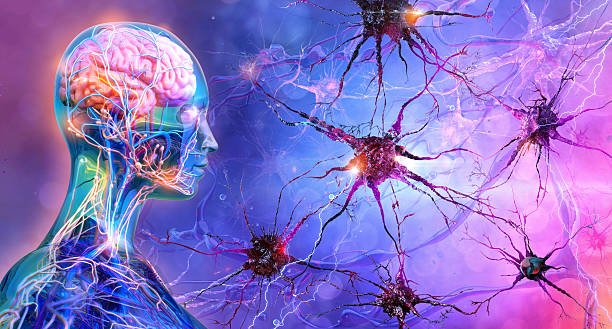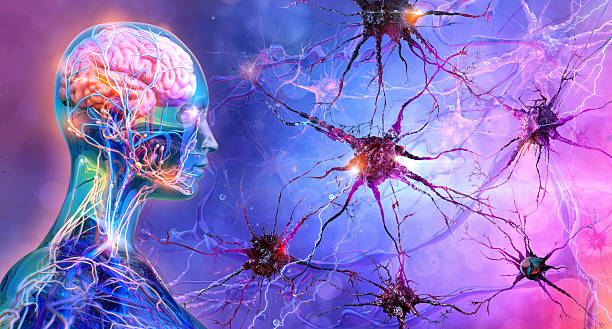
Brain neurons. Concept of logical thinking, intelligence, mental capacity, mind games, psychology, depression, mental health disorders problem. Stress, panic, anxiety, pain, exhaustion disorders, 3D illustration
Unlocking the Science of Compulsive Behaviors: Your Brain’s Survival Mechanism Explained
You’re not broken. You’re emotionally overwhelmed. And that can change. Compulsive behaviors aren’t your fault—they’re your brain’s way of trying to keep you safe. Imagine understanding these patterns not as personal failures, but as survival mechanisms. This shift in perspective can be the first step in freeing yourself from emotional numbing and reclaiming your self-worth. Ready to explore how your brain’s survival mechanism works? Check out this resource. This journey of empowerment and healing awaits. Discover how VK Circle’s non-clinical coaching can guide you toward true transformation.
Understanding Compulsive Behaviors

Understanding compulsive behaviors starts with recognizing them as mechanisms of survival rather than personal failings. These behaviors often stem from the brain’s attempts to cope with overwhelming emotions.
Brain’s Survival Mechanism
Compulsive behaviors are not random. They are rooted in the brain’s complex survival mechanisms. The brain uses these patterns to protect us from perceived threats, even when those threats are emotional or psychological rather than physical. This is part of our ancient wiring, as discussed in a Stanford study.
Our brains are wired for survival. This wiring can sometimes manifest as compulsive behaviors when we face emotional challenges. The brain seeks to avoid pain, using these behaviors as a shield. This can lead to a cycle of addiction as described by NCBI.
The key to breaking this cycle is understanding that these behaviors are not your fault. By viewing them as the brain’s way of coping, you can begin to heal without self-blame. The path to healing involves recognizing the true nature of these survival instincts.
Emotional Numbing Explained
Emotional numbing is a common result of compulsive behaviors. It serves as a temporary escape from pain and discomfort. This numbing effect is the brain’s way of protecting itself from emotional overload, according to Life in Abundance.
When emotions become too intense, the brain seeks out ways to dull the impact. Compulsive behaviors provide a way to achieve this, albeit temporarily. Emotional numbing can feel like a safe haven but often leads to further issues, such as addiction or loss of self-worth.
It’s crucial to address the root causes of emotional numbing. This involves examining the unmet needs and unresolved emotions that drive these behaviors. By doing so, you can begin to replace emotional numbness with emotional clarity and understanding.
Reclaiming Self-Worth

Reclaiming self-worth is essential for breaking free from compulsive behaviors. It involves overcoming shame and cultivating self-love, which can transform your relationship with yourself.
Breaking Free from Shame
Shame can be a significant barrier to healing. Breaking free from shame requires understanding that compulsive behaviors are not moral failings. They are attempts to cope with deeper emotional pain. This perspective is essential to begin the healing process.
To break free from shame, start by acknowledging your feelings without judgment. Recognize the protective role these behaviors have played in your life. Transforming shame into understanding is a powerful step toward reclaiming your self-worth.
Key steps include:
Acknowledge your emotions: Accept them without self-criticism.
Seek understanding: Learn about the brain’s role in compulsive behaviors.
Transform shame into self-awareness: Allow yourself to see these behaviors as a call for help, not a personal failure.
Empowering Self-Love
Empowering self-love involves replacing self-criticism with self-compassion. By understanding the role of compulsive behaviors, you can begin to see yourself with empathy rather than judgment. This shift is crucial for lasting change.
Start small. Practice daily affirmations to build self-love. Recognize that self-worth is not tied to your behaviors but is inherent and unchanging. This transformation from self-hate to self-love is empowering and liberating.
Strategies for empowering self-love:
Daily affirmations: Remind yourself of your worth.
Mindful self-compassion: Treat yourself with kindness.
Recognize progress: Celebrate small victories in your journey toward healing.
Path to Addiction Healing

Healing from addiction involves understanding the benefits of non-clinical coaching and building emotional clarity. These elements are key in finding a path to recovery that resonates with you.
Non-Clinical Coaching Benefits
Non-clinical coaching offers a unique approach to addiction healing. It provides a safe space to explore emotions without judgment or labels. As highlighted by Neuroscience and Addiction, this approach focuses on empowerment and self-discovery.
Coaching allows you to address the emotional pain underlying compulsive behaviors. It provides tools to manage these emotions effectively. By focusing on empowerment, non-clinical coaching helps you rebuild self-worth and find lasting healing.
Benefits include:
Safe exploration: No judgment or clinical labels.
Empowerment focus: Encourages self-discovery and growth.
Emotional management tools: Practical methods for emotional clarity.
Building Emotional Clarity
Building emotional clarity is crucial for overcoming compulsive behaviors. It involves understanding your emotions and how they drive behaviors. This clarity helps you make informed choices that align with your values and goals.
Steps to build emotional clarity:
Identify emotions: Recognize what you’re feeling and why.
Reflect on triggers: Understand what prompts compulsive behaviors.
Align actions with values: Ensure your actions reflect your true self.
With emotional clarity, you can make conscious decisions that lead to healing and growth. This clarity empowers you to move forward with confidence and self-assurance.
🌟



